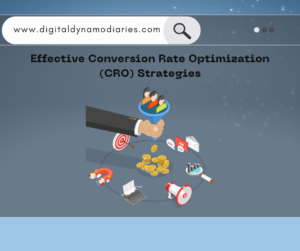Creating a Transparent and Effective Website Privacy Policy
In the digital age, user privacy has become a top priority for both individuals and businesses. Crafting a transparent and effective privacy policy for your website is crucial for building trust with your audience and ensuring legal compliance. This comprehensive guide will walk you through the essential elements of a privacy policy, why it matters, and how to create one that meets the needs of your users and your business.
What is a Privacy Policy?
A privacy policy is a legal document that explains how a website or organization collects, uses, shares, and protects the personal information of its users. It serves as a transparent agreement between you and your visitors, informing them about their data rights and how you handle their information. A well-written privacy policy builds trust, meets legal requirements, and protects both the user and the business.
The Importance of a Privacy Policy
A privacy policy is more than just a legal requirement; it’s a commitment to your users about how you handle their data. Here’s why it’s essential:
1. Legal Compliance: Regulations like the General Data Protection Regulation (GDPR) in Europe and the California Consumer Privacy Act (CCPA) in the United States mandate that websites have a privacy policy. Non-compliance can lead to hefty fines and legal challenges.
2. Building Trust: Transparency about data practices helps build trust with your users. When users know you handle their information responsibly, they are more likely to engage with your site.
3. Risk Mitigation: A clear privacy policy helps mitigate risks associated with data breaches and privacy complaints. It outlines your data practices, providing a reference point in case of disputes.
Key Components of an Effective Website Privacy Policy
To create a comprehensive privacy policy for your website, you need to cover several key elements. Each component ensures that your users are fully informed about how you handle their data.
1. Information Collection
Start by explaining what types of information you collect from users. This can include personal data like names, email addresses, phone numbers, and other relevant information. Specify whether you collect this data directly from users or through automated means such as cookies.
Example: “We collect personal information such as your name, email address, and contact details when you sign up for our newsletter, create an account, or make a purchase. Additionally, we collect data automatically through cookies and similar technologies to enhance your user experience.”
Elaborate on the specific data collection methods your website uses. For instance, mention if you collect data through forms, surveys, account registrations, or tracking technologies.
2. Purpose of Data Collection
Detail why you collect user information and how you use it. Be specific about the purposes, such as improving services, personalizing user experience, processing transactions, or sending promotional materials.
Example: “We use your information to personalize your experience, process transactions, provide customer service, send you updates about our products and services, and improve our website’s functionality.”
Provide examples of how user data enhances the overall experience on your website. Mention personalized recommendations, tailored content, and customer support improvements.
3. Data Sharing and Disclosure
Clarify whether you share user information with third parties. If so, explain who these parties are and for what purposes you share the data. Include information about any third-party service providers, affiliates, or business partners.
Example: “We do not sell your personal information to third parties. However, we may share data with trusted partners who assist us in operating our website, conducting our business, and serving our users. These partners are obligated to keep your information confidential and secure.”
Specify the types of third parties you work with, such as payment processors, marketing agencies, or analytics providers. Highlight the measures you take to ensure these partners handle user data responsibly.
4. Data Protection Measures
Describe the measures you take to protect user data. This can include encryption, secure servers, access controls, and regular security audits. Assure users that you store their data safely and protect it against unauthorized access.
Example: “We implement a variety of security measures to maintain the safety of your personal information. All sensitive information is transmitted via Secure Socket Layer (SSL) technology and stored in encrypted databases. Access to this data is restricted to authorized personnel only.”
Discuss additional security protocols, such as firewalls, intrusion detection systems, and regular security assessments, to provide a comprehensive overview of your data protection strategies.
5. User Rights and Choices
Inform users about their rights regarding their data. This includes the right to access, correct, delete, or restrict the processing of their personal information. Provide clear instructions on how users can exercise these rights.
Example: “You have the right to access, update, or delete your personal information. If you wish to exercise any of these rights, please contact us at [contact information]. We will respond to your request within a reasonable timeframe.”
Detail the specific steps users need to take to manage their data, such as filling out a request form, contacting customer support, or adjusting account settings.
6. Use of Cookies and Tracking Technologies
Explain your use of cookies and other tracking technologies. Describe what information you collect through these methods, how you use it, and how users can manage their cookie preferences.
Example: “We use cookies to enhance your experience on our site. Cookies help us understand user behavior, remember your preferences, and improve our services. You can manage your cookie preferences through your browser settings.”
Provide a breakdown of different types of cookies you use (e.g., essential, performance, advertising) and their specific purposes. Include instructions for users on how to disable cookies if they choose to do so.
7. Policy Updates and Notifications
Notify users about how you will inform them of changes to the privacy policy. Ensure that you communicate updates clearly and promptly. Consider providing a version history for transparency.
Example: “We may update our privacy policy from time to time to reflect changes in our practices or legal requirements. We will notify you of any significant changes by posting the new policy on our website and updating the policy’s effective date.”
Explain how often you review and update your privacy policy. Highlight the importance of users staying informed about these updates to understand how you manage their data.
Steps to Drafting Your Website Privacy Policy
Creating a privacy policy for your website can seem daunting, but following a structured approach can simplify the process. Here are the steps to get you started:
1. Research: Familiarize yourself with the privacy laws and regulations that apply to your audience. Understand the specific requirements of GDPR, CCPA, and other relevant laws.
2. Template: Use a privacy policy template as a starting point. Customize it to reflect your specific data practices, ensuring it covers all necessary elements.
3. Consult Legal Counsel: Ensure your policy complies with legal requirements by consulting with a legal expert. This step is crucial to avoid potential legal pitfalls.
4. Clear Language: Write in clear, concise language that your users can easily understand. Avoid legal jargon and technical terms that may confuse your audience.
5. Regular Updates: Regularly review and update your policy to reflect changes in your data practices or legal requirements. Set a schedule for periodic reviews and updates.
Conclusion
A well-crafted privacy policy is a vital component of your website. It not only ensures compliance with legal obligations but also fosters trust and transparency with your users. By clearly outlining your data practices, you can build a strong relationship with your audience and protect your business from potential legal issues. Take the time to create a comprehensive privacy policy that reflects your commitment to user privacy and data protection.



